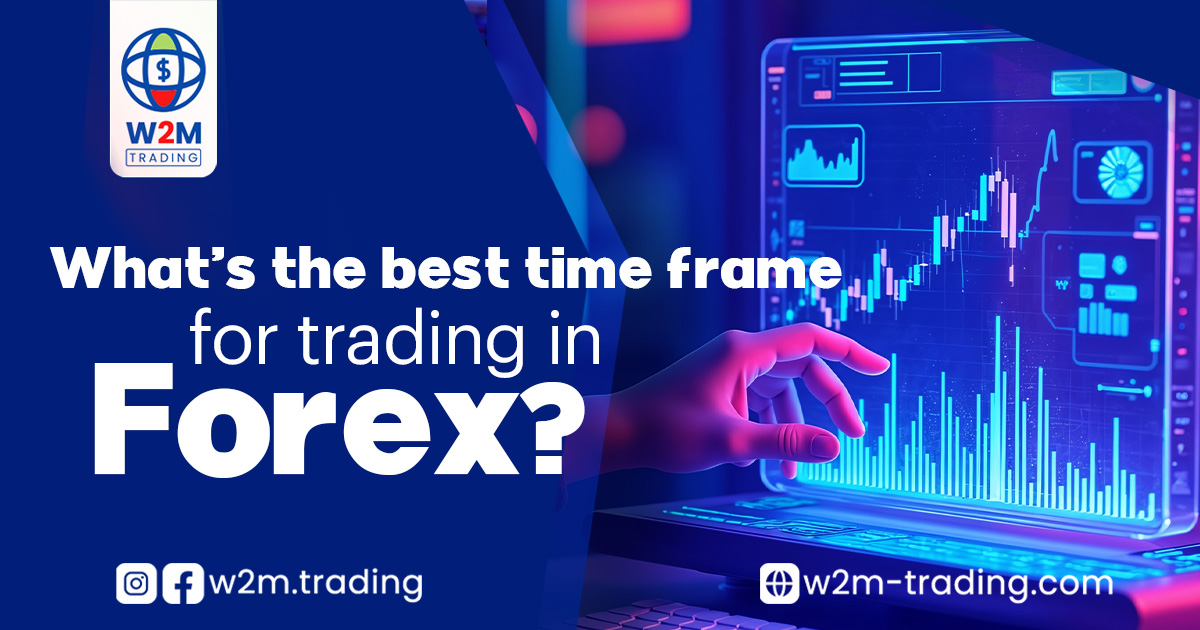In the world of financial market trading, one of the most common questions asked by traders, whether beginners or professionals, is: “What is the best time frame for trading?” The answer to this question can be somewhat complex, as the choice of time frame depends on a variety of factors, including trading strategy, lifestyle, and experience level. In this article, we will explore all aspects of time frames in trading and explain the best options available for traders in the forex market.
What is a Time Frame in Trading?
A time frame, or chart time frame, is the duration over which price movements are analyzed on a chart. Each time frame reflects the amount of movement that occurs within a specific period. For example, if you use a one-minute time frame, the chart will display price movements over one-minute intervals. If you choose an hourly time frame, the chart will show price movements over one-hour intervals.
The time frame has a significant impact on trading strategies, as choosing the right time frame can help traders identify opportunities more effectively and determine optimal entry and exit points.
Types of Time Frames in Forex
There are several time frames used in trading, each with its own advantages and specific uses. The main time frames used by traders are:
Short-Term Time Frames (Scalping)
- 1 Minute (M1): Used by traders in fast-paced strategies (scalping), where they open and close trades within minutes.
- 5 Minutes (M5) and 15 Minutes (M15): Commonly used in scalping strategies and by traders who follow fast and volatile markets.
Medium-Term Time Frames (Day Trading)
- 30 Minutes (M30) and 1 Hour (H1): Used by traders who prefer to stay in the market longer than scalpers but do not plan to invest for extended periods.
- 4 Hours (H4): Suitable for traders who prefer to place trades during the day but do not want to risk monitoring the market continuously.
Long-Term Time Frames (Swing Trading and Position Trading)
- Daily (D1): Used by traders who open medium- to long-term trades. The market is analyzed on a daily basis.
- Weekly (W1) and Monthly (MN): These time frames suit traders who follow swing trading strategies or fundamental analysis and focus on long-term trends.
How to Choose the Right Time Frame?
Choosing the right time frame depends primarily on your trading strategy, the time you have available, and the type of market you are trading. Here are some guidelines to help you select the best time frame for you:
- Short-Term Trading (Scalping): If you aim to make quick profits from small price movements, short-term time frames like M1, M5, and M15 are ideal. However, you must be able to make quick decisions and analyze the market continuously.
- Medium-Term Trading (Day Trading): If you prefer to stay in the market a bit longer but do not want to wait weeks for results, time frames like H1 and H4 are good options. These time frames provide enough time to analyze intraday trends and make informed trading decisions.
- Long-Term Trading (Swing Trading): If you are looking for long-term strategies and can tolerate large price movements while waiting for extended periods before closing a trade, time frames like D1, W1, and MN are most suitable. These time frames offer a clear view of long-term trends and can be more stable.
Advantages and Disadvantages of Different Time Frames
Short-Term Time Frames (M1, M5, M15):
- Advantages:
- Provide numerous trading opportunities in a short period.
- Allow for quick results.
- Suitable for traders who prefer fast and volatile movements.
- Disadvantages:
- Require close monitoring and constant attention.
- May be more susceptible to market noise and volatility.
Medium-Term Time Frames (H1, H4):
- Advantages:
- Offer a balance between speed of analysis and accuracy.
- Provide enough time for traders to make decisions.
- Suitable for part-time traders.
- Disadvantages:
- May be slower to respond to sudden market changes.
- Require more time to monitor the market compared to short-term time frames.
Long-Term Time Frames (D1, W1, MN):
- Advantages:
- Provide a clear view of long-term trends.
- Less susceptible to daily fluctuations.
- Suitable for traders who prefer less stressful trading.
- Disadvantages:
- May not offer daily trading opportunities.
- Require patience and long waiting periods for results.
Tips for Choosing the Best Time Frame for Forex Trading
- Align with Your Strategy: The time frame should align with your trading strategy. If you follow fast-paced strategies like scalping, you will need short-term time frames. If you rely on fundamental analysis and long-term trends, daily or weekly time frames may be more suitable.
- Experiment and Test: There is no perfect time frame for everyone. Experimentation is the best way to determine which time frame suits your style. Try different time frames and monitor your performance.
- Be Flexible: Be prepared to switch time frames when necessary. Markets are not static, and you may need to adapt to market fluctuations.
Conclusion
Choosing the right time frame in forex trading largely depends on your trading style and strategy. Short-term time frames may offer quick opportunities, while long-term time frames provide a better view of major market trends. The key is to ensure that you choose a time frame that aligns with your trading goals and expectations.
You can watch a video on “What is the Best Time Frame for Trading in Financial Markets?” on our YouTube channel through the following link
You can also follow everything related to trading through the educational series “Trading for Beginners” on our YouTube channel via here
